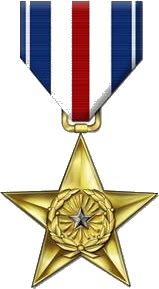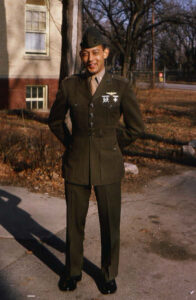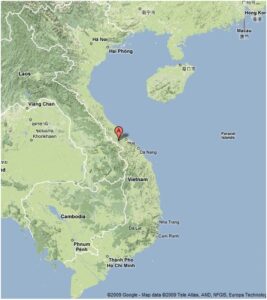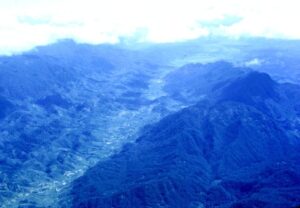Lt Augusto Xavier USMC
A Hero's Tale Retold
Pinky da Silva
Lt Augusto (Gussie) Xavier USMC lost his life in Vietnam in March 1966 leading a flight of four A-4 Skyhawk fighter-bombers while assisting a beleaguered US Special Forces (“Green Berets”) base camp. He was awarded the Silver Star medal for exceptional leadership and gallantry under enemy fire.
Gussie was born in Hong Kong on 26 May 1941 to “Smoky” and “Tootie Xavier“. His Dad participated in the Battle of Hong Kong in December 1941 with the Hong Kong Volunteers and was interned at a PoW camp in Sendai, Japan for the duration of the Pacific War. His son Gussie was to become a war hero in a different war.
The Marine Corps saw in him a gifted natural leader. After basic boot camp training at Camp Pendleton Marine Base in southern California he went on to officer candidate school for leadership training. He chose Corps Aviation as his career specialty and took combat flight training at nearby El Toro Marine Air Station where he earned his officer’s commission and his “aviator’s wings”.
The Xaviers settled in San José, California where Gussie attended Bellarmine High School, a Jesuit institution. The U.S military draft was in effect, so he enlisted in the United States Marine Corps after his high school graduation. By doing so he had the choice of the military service to serve under. Full-scale US participation in Vietnam was not yet on.
Gussie landed with the U.S Marines at Danang, South Vietnam in 1965. The Marine Corps differed from the US Army in that it independently had its own fixed wing fighter-bombers to assist in close air-ground operations. He was assigned to the 1st Marine Air Wing at Danang and soon flew combat missions.
A Shau Valley is an upland valley near the junction of the borders of (the former) North and South Vietnam and Laos. It rests on the Cordillera Annamite, the backbone central mountain range running from south China through the Vietnam, Laos, and Cambodia. For centuries the upland valleys were home to various hill tribes collectively known as montaignards. Their life-styles differed from the “lowland” Vietnamese of the northern Tonkin and southern Mekong deltas and the lowland coastal plains. Thus they found in the Americans a useful ally when the North Vietnamese began to use the upland connecting trails to bring weapons and supplies to the Vietcong guerrillas in South Vietnam. A Shau Valley, about 26 miles long and about 5 miles at its widest, stood astride of these many upland trails later to be known in the singular as “The Ho Chi Minh Trail”. The valley floor ranges from about 1000 to 2000 feet above sea-level. It is ringed by forested mountain peaks some topping 4000 feet. It used to be home to an old established montaignard settlement later to become a well-fortified US Special Forces base camp manned by about 20 Green Berets and about 350 montaignard irregulars. Its position camp had strategic military value for both sides.
The North Vietnamese army waited for “crachin weather” to set in to offset superior American air power. This is early springtime weather in Vietnam when cloud ceilings are lowered, light drizzle sets in, and mountain peaks are shrouded in mist.
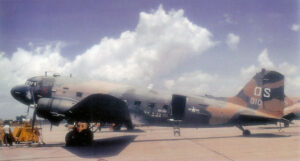
On 9 March 1966 an already well-placed crack North Vietnamese regiment of about 2500 personnel launched a massive attack on the base camp with mortar, artillery, and heavy machine gun fire as its infantry men advanced. The battle raged on all night as US Special Forces “air commando” AC-47 fixed wing gunships and AC-123 flareships dropped illuminating flares and skin-searing, wide-area damage phosphorous bombs on the attackers. The base was in danger of being overrun. The Green Berets called on the Marine Corps for very close air support.
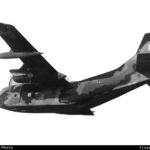
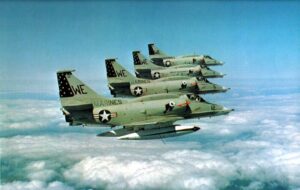
By dawn’s early light of 10 March 1966, Lt Augusto Maria Xavier USMC, led a flight of four A-4 Skyhawks into the fray. Gussie faced a daunting mission: he had to fly his aircraft swiftly but deftly into heavy cloud banks shrouding mountain peaks, swoop down through a cloud ceiling of only 400 feet above ground, deposit his load of napalm bombs accurately on target, then bank his aircraft into the mountain mist for safety under heavy anti-aircraft fire. His aircraft may well have been hit during his successful bomb-run. Whatever the reason, his A-4 Skyhawk slammed into a hillside shrouded in mist some miles away from the threatened base camp under attack. His body was never recovered. He was shy two months of his 25th birthday.
Augusto Maria Xavier‘s name and his date of death are enshrined at the Vietnam Veterans Memorial Wall in Washington, DC, Panel 06E, Line 001. Semper Fidelis.
Ten. Augusto Xavier USMC
A história de um herói recontada
Pinky da Silva
O Tenente Augusto (Gussie) Xavier, USMC, perdeu a vida no Vietname em março de 1966. Foi condecorado, a título póstumo, por liderança excecional e bravura sob fogo inimigo.
Gussie nasceu em Hong Kong em 26 de maio de 1941, filho de Smoky e de Tootie Xavier. Seu pai servira na marinha mercante durante a Segunda Guerra Mundial; o filho viria a tornar‑se herói — noutra guerra.
No pós‑guerra, Gussie Vivia em Tsimshatsui, Hong Kong. Para melhorar a vida da família Xavier, Smokey e Tootie decidiram emigrar para os Estados Unidos. Vieram no SS President Wilson. O primeiro dia de Gussie na América foi em 20 de agosto de 1955, em Honolulu, Havaí. Ele tinha então 14 anos.
Os Xaviers fixaram‑se em San José, Califórnia, onde Gussie frequentou o liceu. A participação dos EUA no Vietname ainda não era em larga escala.
O Corpo de Fuzileiros Navais reconheceu nele um líder nato. Após a instrução e a formação avançada, recebeu o posto de oficial e as suas “asas” de aviador.
O Vale de A Shau fica em terreno elevado, perto do Encontro das fronteiras do Vietname, Laos e Camboja. Ali existia um campo das Forças Especiais norte‑americanas, cuja posição tinha valor estratégico para ambos os lados.
Gussie desembarcou com os Marines em Danang, Vietname do Sul, foi colocado na 1st Marine Air Wing e em breve voava em missões de combate.
O exército norte‑vietnamita aguardou a chegada do chamado “crachin weather”: o céu cobre‑se de nuvens baixas, instala‑se uma chuva miudinha e os picos das montanhas ficam envoltos em neblina.

Ao romper da manhã de 10 de março de 1966, o Tenente Augusto Maria Xavier liderou voos de ataque, lançando napalm com precisão sobre os alvos e curvando depois o aparelho para a segurança da névoa montanhosa sob intenso fogo antiaéreo. O seu avião foi atingido e despenhou‑se; os destroços nunca foram recuperados. Faltavam‑lhe dois meses para perfazer 25 anos.

Em 9 de março de 1966, uma força de elite norte‑vietnamita, bem colocada, desencadeou um ataque pesado com morteiros e armas automáticas contra o campo. A base esteve em risco de ser tomada; os Boinas Verdes chamaram o Corpo de Fuzileiros Navais para apoio aéreo aproximado.

O nome de Augusto Maria Xavier e a data do seu falecimento estão gravados no Vietnam Veterans Memorial, em Washington, DC — painel 06E, linha 001. Semper Fidelis.
